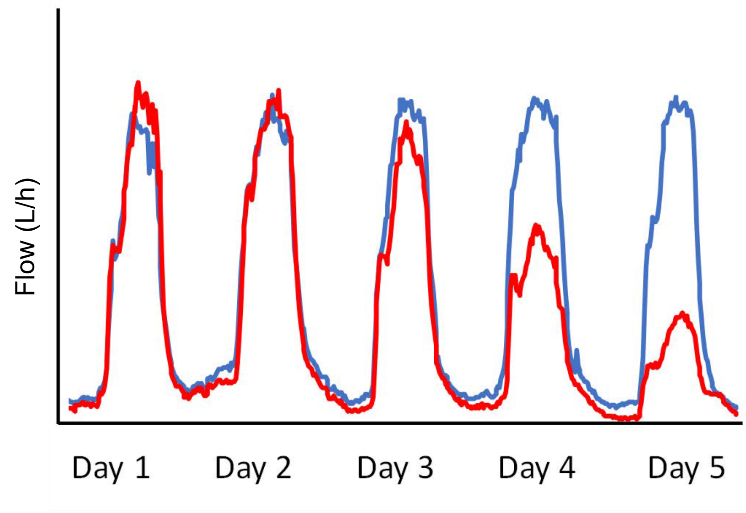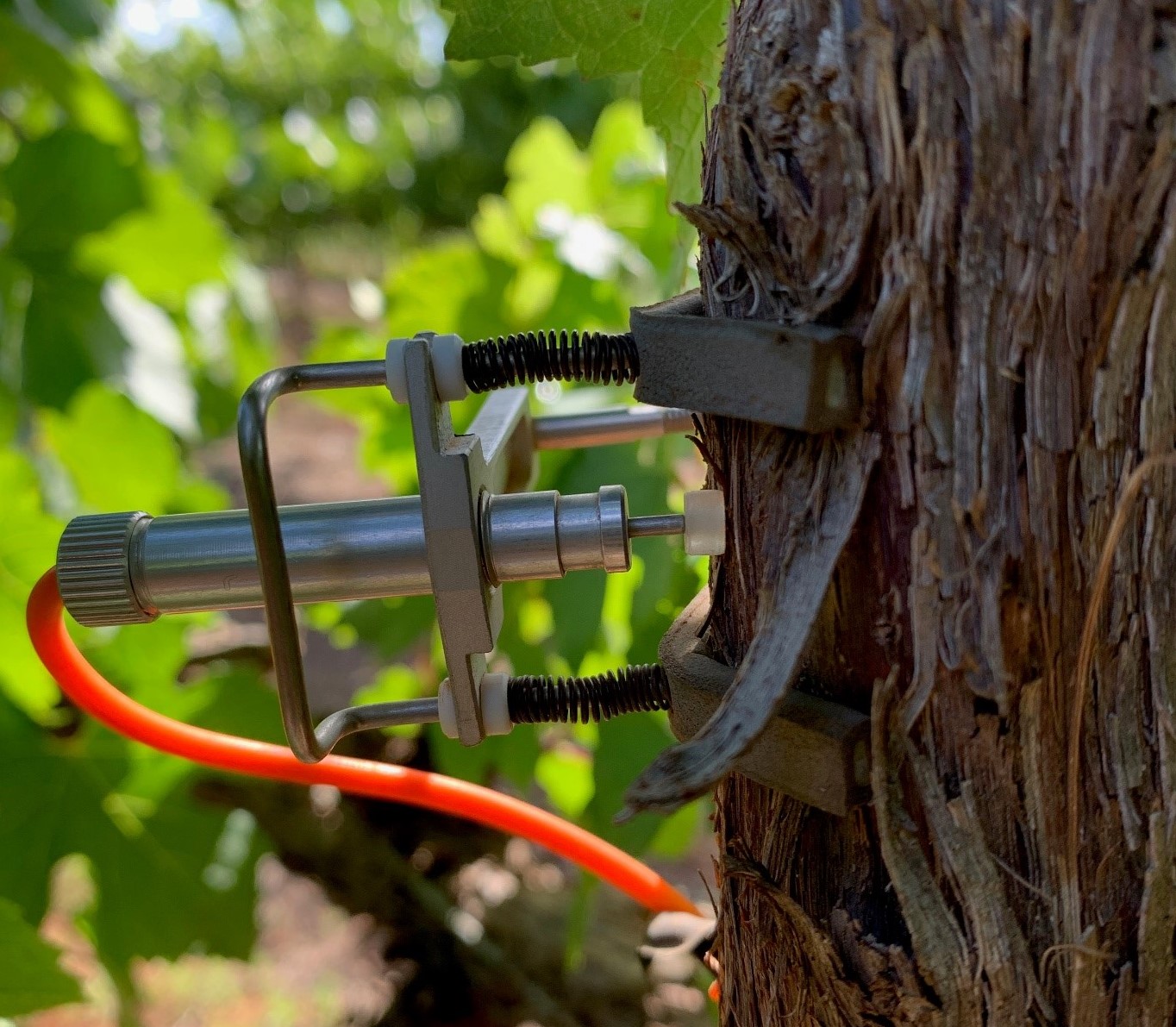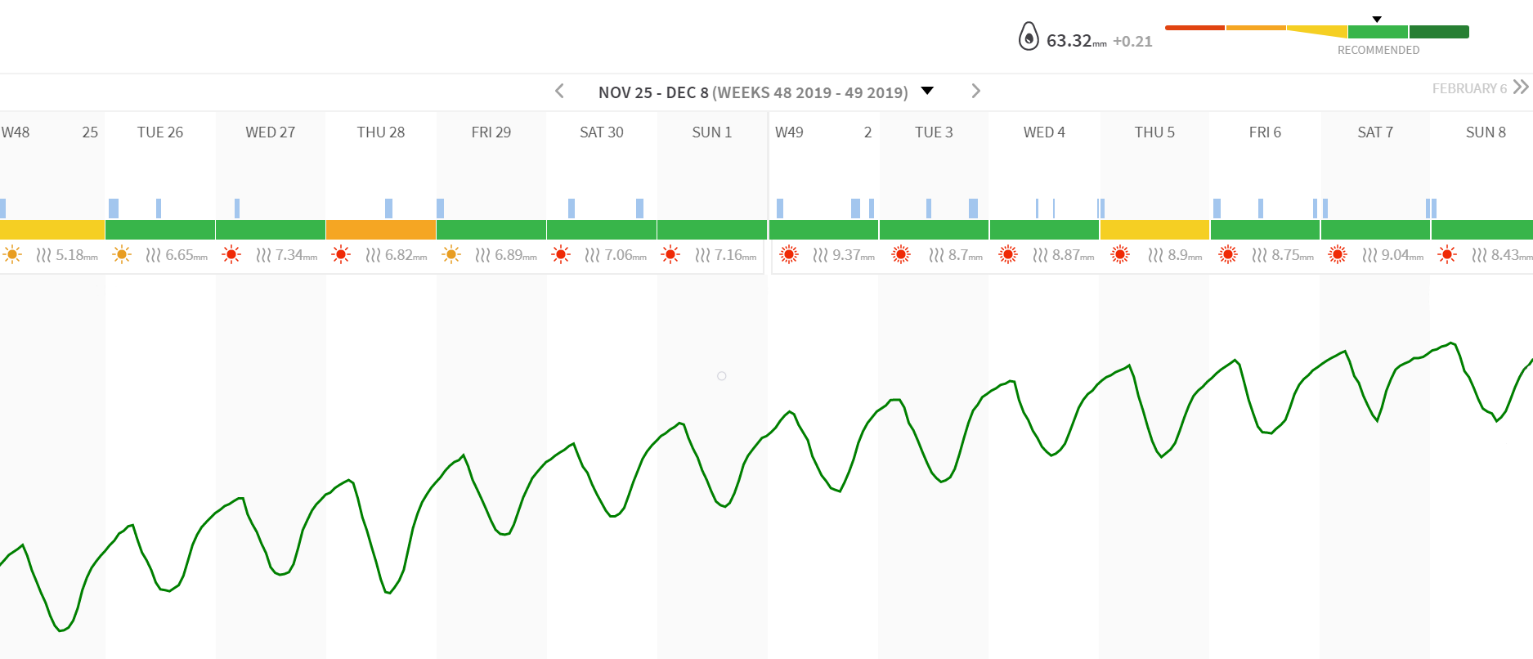Technology used in irrigation scheduling is becoming more diverse and more sophisticated. Scheduling information can be gathered from variety of sources including weather stations, soil moisture monitoring devices, and plant sensors.
Plant-based sensors work on the concept of using plants as a “biosensor”. Meaning, the plant is used as the integrator of soil-water and atmospheric conditions to determine when the plant is experiencing stress.
There are many sensing methods and plant variables which can be used to measure water status and stress. These measurements can guide when irrigation events are needed. Traditional plant-based approaches, such as pressure bombs, provide very accurate measures of plant stress. However, they are labour intensive to use, destructive, and interpretation can be subjective.
Development in the Internet of Things and the growth of precision agriculture means devices which are automated and continuously recording are favoured for irrigation scheduling.
Sap flow sensors measure the movement of fluid through the xylem of plants via a sensor inserted into the plant’s sapwood. As a plant goes from an irrigation cycle to a stress cycle, sap flow will reduce. Measurements are presented as values in litres per hour or per day.

Figure 1. Daily sap flow patterns for two trees. The red line shows a tree entering water stress on day 3. (Image: Edaphic Scientific)
Dendrometers measure daily patterns of shrinkage and swelling in the stem, trunk or fruit of plants. As plants transpire throughout the day, the trunk shrinks. Overnight as water is replenished throughout the plant tissue the trunk will swell. When plants are experiencing water stress the variation between maximum trunk or stem diameter and minimum trunk diameter is greater, and the stem growth rate can reduce or become negative.
Canopy temperature sensors are used to monitor the temperature variations in the canopy. When plants are within optimum temperature ranges yield and physiological functions continue normally. As plants enter water stress, the stomata in the leaves close to maintain hydration. Reduced transpiration means the canopy temperature rises and when it reaches a known threshold, an irrigation event can be triggered.
The raw data from plant-based sensors can be difficult to interpret and require calibration when installed. Some product or service suppliers can offer more user-friendly systems and assistance with interpreting results.
Choosing a sensor requires weighing up the costs and benefits of different devices, and the support services that come with the product. Not all sensors will be practical or compatible with farm management systems, and in some circumstances the technology may not be well developed for specific crop types.
Plant-based sensors provide an integrated measure of a plant’s response to environmental conditions to aid irrigation decision making. These devices complement other irrigation scheduling technologies such as soil moisture monitoring to give a more detailed picture of irrigation demand.
Content sources and further information
Plant-based sensors for irrigation scheduling factsheet: http://agriculture.vic.gov.au/__data/assets/pdf_file/0020/522173/Plant-based-sensors-for-irrigation.pdf?v=2
Riverina vineyard dendrometer and sap flow demonstration: https://www.dpi.nsw.gov.au/agriculture/horticulture/grapes/vineyard-technology/riverina-vineyard-dendrometer-and-sap-flow-demonstration


